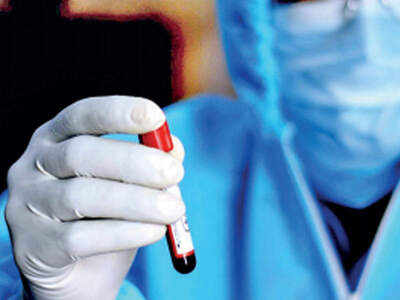
BENGALURU: The Covid-19 pandemic in Karnataka, which appeared largely manageable until the end of May has now begun to alter charts exponentially. As experts declare July as the beginning of the anticipated peak, juxtaposing numbers of three important aspects — cases, deaths and tests — shows that all three categories have posted records in June-July.
Data from July 8 shows that the number of deaths jumped by 822% to touch 470 compared to just 51 on May 31. The number of cases jumped 796% to touch 28,877 from 3,221, while testing recorded a 159% jump with a total of 7.6 lakh samples tested as on July 8, compared to 2.9 lakh on May 31.

Testing peaks
Given the high base number, the percentage increase in the number of tests conducted is much lower than the growth in number of cases and deaths, but the state conducted 61% of the 7.6 lakh total tests in the 38 days, while the remaining 40% were covered over 184 days.

Posting a 159% growth, Karnataka tested 4.6 lakh samples in the said period, to touch 7.6 lakh tests cumulatively by the end of July 8. Nearly 1.4 lakh or 30% of the 4.6 lakh samples were tested in just the eight days of July at a rate of 17,304 tests per day.

Before this, the peak in daily testing was witnessed in the last week of May, when the state tested more than 13,000 samples per day, larging due to an influx of returnees, when everybody returning was mandatorily tested.

That said, as reported by TOI multiple times in the past week, Karnataka will need to test more given that the state is set to peak in the coming months. As on date, the state is not even testing 50% of its declared capacity of about 31,000 tests per day.
Preventable deaths?
As on July 8, Karnataka had lost 470 people to Covid-19 from just 51 as on May 31, posting a growth of 822%. This also means that nearly 90% of the deaths were recorded in the five weeks beginning June 1, even as the most significant increase came in the first eight days of July.
Up to April the daily average of deaths was under one. In May, it was about one death per day on average. This jumped to 6.5 deaths a day in June, and has grown alarmingly to touch 28 deaths a day in July.
From 51 deaths at the end of May, the state had 88 deaths by June 15, which then grew to 246 by the end of the month. In the next eight days, Karnataka has recorded 224 deaths, which is about 48% of the total deaths in the state as on July 8.
While the overall fatality rate in Karnataka is 1.6%, it is more than 6% for those above 60 years. Data up to July 8 shows that 218 of the 470 deaths were of people 60 years or more, while another 95 of them were aged between 50 and 60.
Also, nearly 70% to 80% of the patients who have died so far have had comorbidities, Manjunath pointed out, adding that other reasons like late hospitalisation has also added to the toll. However, as reported by TOI earlier, the problem of inadequate beds, especially, ICU beds are also resulting in deaths.
Cases & Shift In Focus
Dr CN Manjunath, member, Karnataka Covid-19 taskforce, told TOI: “Generally a pandemic spreads out for about six months or so. We have crossed about four months now and the cases are expected to surge. And, an exponential surge in cases will see some more deaths, which is why the focus must be on keeping fatality under check. The ideal situation is where this rate is 1%, but we are already at 1.6%.”
Other experts like Dr Giridhara Babu, professor, Indian Institute of Public Health, Dr MK Sudharshan, member, state Covid taskforce, and others have also been batting for a shift in strategy that focuses more on preventing deaths, which is more under the government’s control than the increasing number of cases.
Cases in the state have grown 796% from May 31 to touch 28,877 as on Wednesday (July 8). On May 1, the number of cases ws just 589, from where it jumped to 3,221 as on May 31, growing 446%. From here it touched 1.5 lakh by June 30 and another 13,635 cases have been added in the first eight days of July, which means that cases grew at a rate of 1,704 per day.
Data from July 8 shows that the number of deaths jumped by 822% to touch 470 compared to just 51 on May 31. The number of cases jumped 796% to touch 28,877 from 3,221, while testing recorded a 159% jump with a total of 7.6 lakh samples tested as on July 8, compared to 2.9 lakh on May 31.

Testing peaks
Given the high base number, the percentage increase in the number of tests conducted is much lower than the growth in number of cases and deaths, but the state conducted 61% of the 7.6 lakh total tests in the 38 days, while the remaining 40% were covered over 184 days.

Posting a 159% growth, Karnataka tested 4.6 lakh samples in the said period, to touch 7.6 lakh tests cumulatively by the end of July 8. Nearly 1.4 lakh or 30% of the 4.6 lakh samples were tested in just the eight days of July at a rate of 17,304 tests per day.

Before this, the peak in daily testing was witnessed in the last week of May, when the state tested more than 13,000 samples per day, larging due to an influx of returnees, when everybody returning was mandatorily tested.

That said, as reported by TOI multiple times in the past week, Karnataka will need to test more given that the state is set to peak in the coming months. As on date, the state is not even testing 50% of its declared capacity of about 31,000 tests per day.
Preventable deaths?
As on July 8, Karnataka had lost 470 people to Covid-19 from just 51 as on May 31, posting a growth of 822%. This also means that nearly 90% of the deaths were recorded in the five weeks beginning June 1, even as the most significant increase came in the first eight days of July.
Up to April the daily average of deaths was under one. In May, it was about one death per day on average. This jumped to 6.5 deaths a day in June, and has grown alarmingly to touch 28 deaths a day in July.
From 51 deaths at the end of May, the state had 88 deaths by June 15, which then grew to 246 by the end of the month. In the next eight days, Karnataka has recorded 224 deaths, which is about 48% of the total deaths in the state as on July 8.
While the overall fatality rate in Karnataka is 1.6%, it is more than 6% for those above 60 years. Data up to July 8 shows that 218 of the 470 deaths were of people 60 years or more, while another 95 of them were aged between 50 and 60.
Also, nearly 70% to 80% of the patients who have died so far have had comorbidities, Manjunath pointed out, adding that other reasons like late hospitalisation has also added to the toll. However, as reported by TOI earlier, the problem of inadequate beds, especially, ICU beds are also resulting in deaths.
Cases & Shift In Focus
Dr CN Manjunath, member, Karnataka Covid-19 taskforce, told TOI: “Generally a pandemic spreads out for about six months or so. We have crossed about four months now and the cases are expected to surge. And, an exponential surge in cases will see some more deaths, which is why the focus must be on keeping fatality under check. The ideal situation is where this rate is 1%, but we are already at 1.6%.”
Other experts like Dr Giridhara Babu, professor, Indian Institute of Public Health, Dr MK Sudharshan, member, state Covid taskforce, and others have also been batting for a shift in strategy that focuses more on preventing deaths, which is more under the government’s control than the increasing number of cases.
Cases in the state have grown 796% from May 31 to touch 28,877 as on Wednesday (July 8). On May 1, the number of cases ws just 589, from where it jumped to 3,221 as on May 31, growing 446%. From here it touched 1.5 lakh by June 30 and another 13,635 cases have been added in the first eight days of July, which means that cases grew at a rate of 1,704 per day.

Coronavirus outbreak
Trending Topics
LATEST VIDEOS
City
 Cops recover gangster Vikas Dubey's bag from Mahakal temple locker following his arrest
Cops recover gangster Vikas Dubey's bag from Mahakal temple locker following his arrest  Covid-19- How Karnataka went from ready in May to floundering in July
Covid-19- How Karnataka went from ready in May to floundering in July  Tamanche pe disco: Mentally unstable man dances with firearms, shot at by cops in UP
Tamanche pe disco: Mentally unstable man dances with firearms, shot at by cops in UP  Yes Bank PMLA case: Assets worth over Rs 2,200 crore of Rana Kapoor, others attached by ED
Yes Bank PMLA case: Assets worth over Rs 2,200 crore of Rana Kapoor, others attached by ED
More from TOI
Navbharat Times
Featured Today in Travel
Get the app





